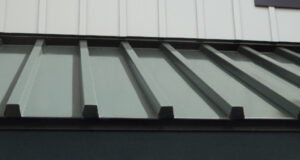A metal roof is a great choice for any homeowner who is looking to improve the overall appearance of their home. It also delivers a long list of other benefits, such as durability, weather resistance, and energy efficiency.
Whether you’re looking to upgrade your current roof or are considering a new home build, metal roofing is a good option for many homeowners across the country.
Metal roofing is a durable option that will help keep your home or commercial building safe and secure. It is also a great way to enhance your property value, which can be helpful when you are looking to sell your home or commercial building in the future.
One of the best things about metal roofing is that it can be used on just about any type of structure. You can choose from different types of metal, including steel (galvanized, galvalume, or weathered), aluminum, copper, zinc, and tin.
The type of metal you choose will have an effect on the durability of your roof, so it is important to make sure you select the right material for your needs. For example, a lighter-colored metal will be more resistant to corrosion than a dark-colored one.
Stainless steel is the most common choice, but other materials like zinc are also available. Zinc can be rust-resistant and is less expensive than some other options.
It is important to note that if you are considering using metal panels on your roof, it is vital to choose high-quality materials and a reputable manufacturer. If you do not select the right material for your project, it could lead to a variety of problems in the future.
If you are unsure of which metal to use, talk with your local contractor and ask him or her about the various options available. They will be able to recommend the right type of material for your situation.
Another key aspect to consider is the paint system that will be applied to your metal panels. This will determine how long your roof will last and how much maintenance it will need.
There are a wide range of paint colors available for metal roofing. These colors are formulated to work with the substrate and coating of metal to provide the most durability.
This means that your metal roof will likely stay looking new for decades. This can be especially true if you have chosen the right coating system and metal substrate.
While there are some issues that can arise from the installation of metal roofs, these tend to be fewer than with other materials. For instance, if the installation is done poorly or not properly adhered to the metal substrate, it can lead to leaks that are difficult to fix.
When it comes to the durability of a roof, there is no doubt that metal roofing systems have an edge over their competitors. They are rust-resistant, resistant to fire, and can last for decades with little maintenance.
However, they are also susceptible to extreme weather conditions. For instance, if the roof is exposed to too much sunlight, it can cause problems like fading, chalking, and cracking.
In addition, if the roof is not properly installed or repaired, it can accumulate water and become saturated over time. These water spots can corrode the metal and rot it, which could ultimately lead to structural failure of the roof.
For these reasons, it is critical to select a roofing system that can withstand the worst of the weather. This can help you avoid the high repair costs of a roof that suffers from severe storm damage.
Most metal roofs are designed with a heavy-duty galvanized coating that enhances their resistance to the elements and makes them less likely to deteriorate prematurely. This coating also helps to prevent algae from growing on the surface of the roof, reducing the risk of staining.
Another major factor in determining the durability of a metal roof is its impact resistance. Many roofing systems are tested by the UL 2218 Standard for Impact Resistance of Prepared Roof Covering Materials Rating, which simulates hailstones with a 1.25- to 2-inch steel ball that is dropped from a height of 12 feet above the roof.
This test measures the strength of the metal panels, including edges, seams, and unsupported joints. If a panel does not break when the steel ball is dropped, it will receive a Class 4 rating.
Moreover, metal roofs can withstand freeze-thaw cycles better than other types of roofing materials. When water seeps into the cracks of porous roofing materials, it increases the volume of the material and can exert tremendous pressure when it freezes. This can result in cracking and rotting, as well as damaging the surrounding structure.